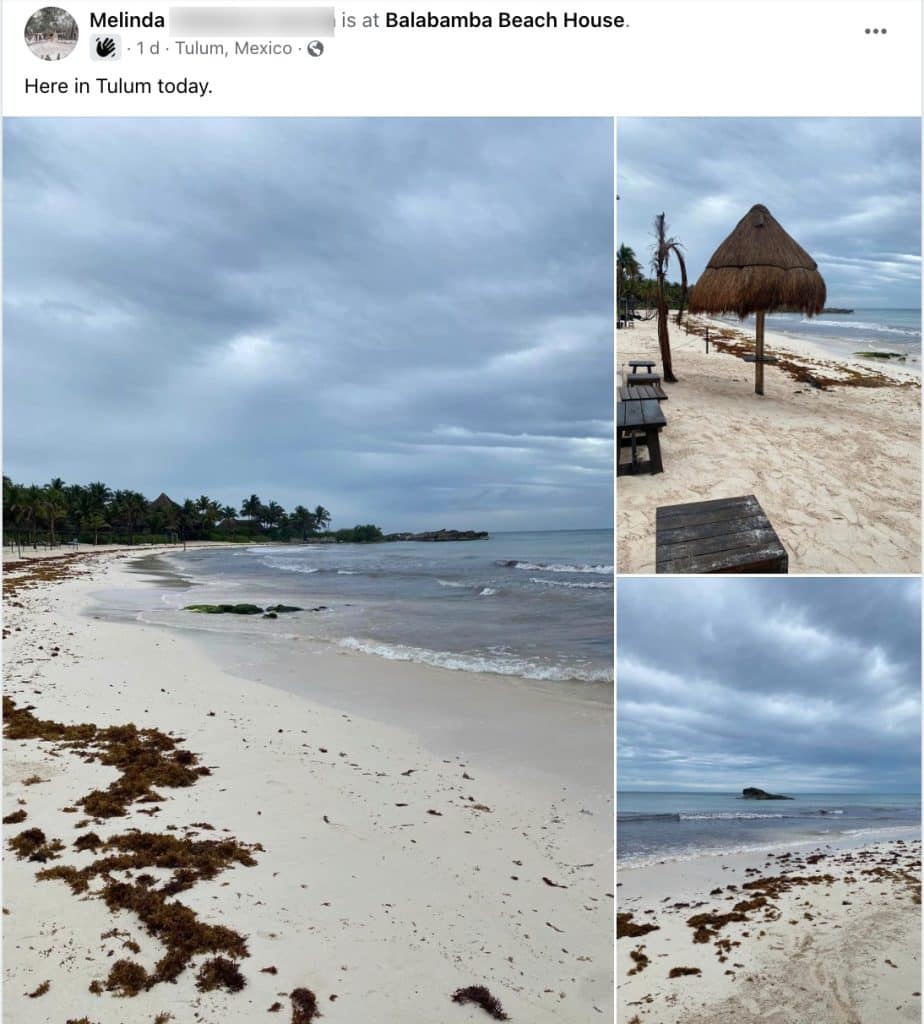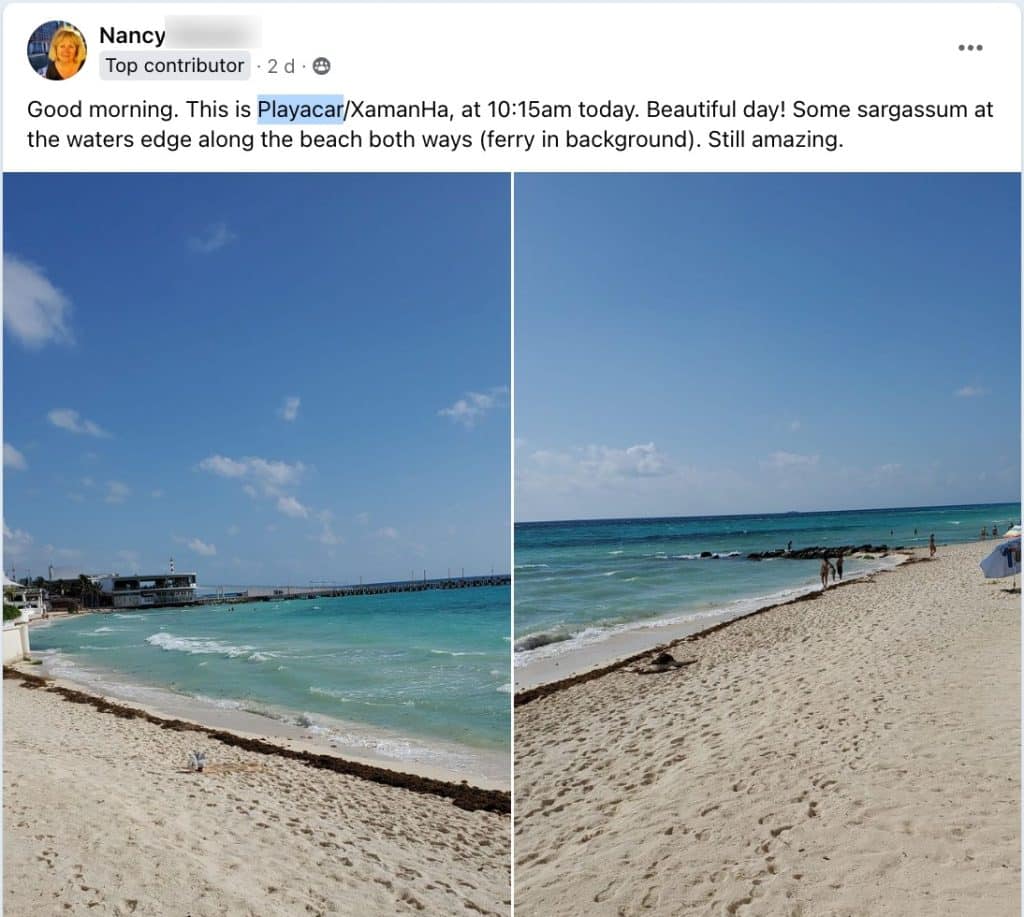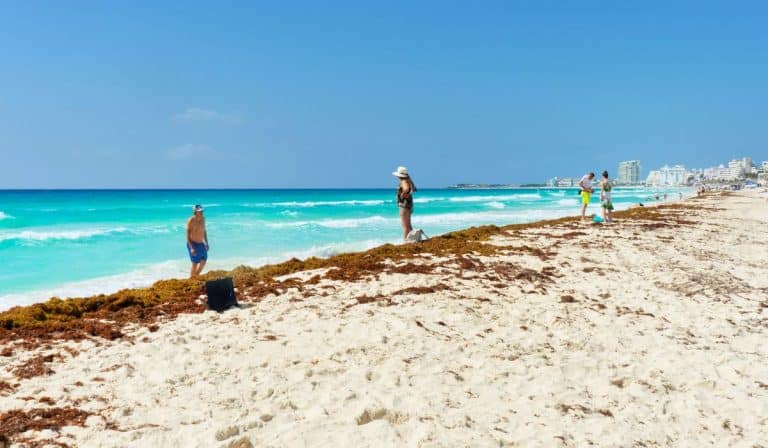In the latest environmental development, the Mexican Caribbean is once again grappling with the seasonal arrival of Sargassum, a type of seaweed that has become increasingly prominent along its pristine beaches over the past decade. A recent photo report highlights the increased arrival of the sargassum on the popular beaches of Tulum, Playa del Carmen and Cancun.
Sargassum, a brown algae, originates in the Sargasso Sea, a region in the North Atlantic Ocean bounded not by land, but by ocean currents. While it plays a crucial role in marine ecosystems, providing habitat and food for a variety of marine species, its arrival on shores in vast quantities presents numerous challenges.
Photos from Sargassum Reporting FB Group
Cancun – February 19, 2024

Playa Del Carmen – February 16, 2024

Tulum – February 18, 2024

Playacar – February 17, 2024

Impacts of the Sargassum
This seasonal event has significant economic implications for the region, particularly affecting the tourism sector, which is a vital part of the local economy. Tourists are often deterred by the sight and smell of decomposing Sargassum, leading to cancellations and reduced visitor numbers. This, in turn, affects local businesses and livelihoods reliant on tourism.
Moreover, the environmental impact is profound. The decomposition of Sargassum on beaches depletes the oxygen in the water, posing a threat to marine life and coral reefs. It also results in the release of hydrogen sulfide, a gas with a foul odor that can have health implications for both wildlife and humans.
What’s Causing the Sargassum
The causes of the Sargassum bloom are complex and multifaceted. Scientists point to a combination of factors, including rising sea temperatures due to climate change, changes in sea currents, and an increase in nutrients in the ocean from agricultural runoff. These conditions create an environment conducive to the rapid growth and proliferation of Sargassum.
Efforts to address the Sargassum challenge are ongoing, with research into sustainable management practices and the potential use of seaweed as a resource, for example, in agriculture and energy production. However, the situation underscores the broader issues of environmental stewardship and the need for a concerted global effort to tackle the root causes of such ecological imbalances.

